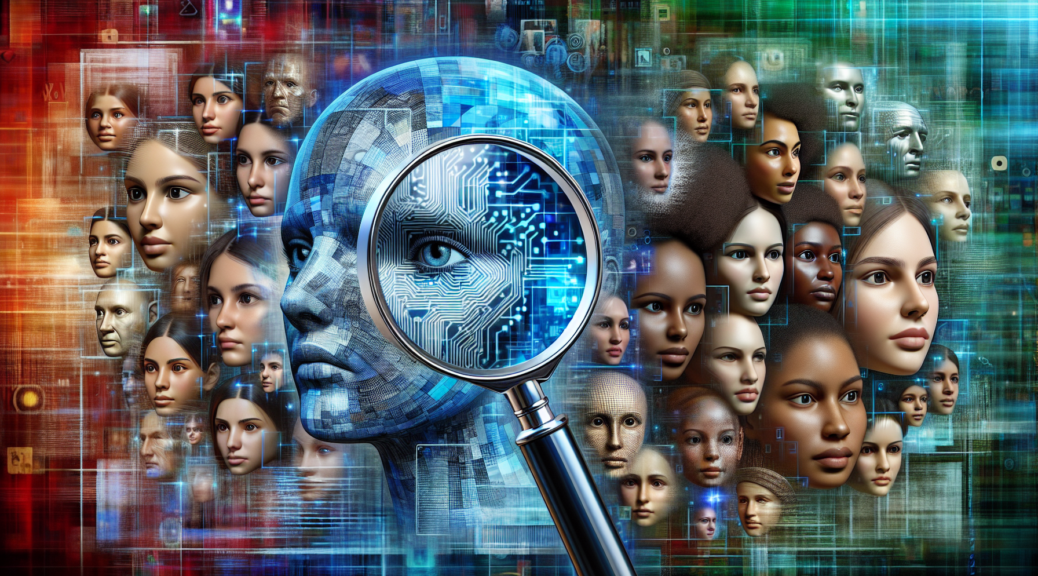
Mastering AI Detection: A Key Strategy to Combat Deepfakes in Today’s Digital Landscape
Mastering AI Detection: A Key Strategy to Combat Deepfakes in Today’s Digital Landscape
In an era where the digital and physical realms are intricately interwoven, the emergence of deepfake technology stands out as a significant challenge. With the power to seamlessly blend reality with artificial manipulation, deepfakes are becoming a growing threat across various fields — from politics and entertainment to personal privacy and beyond. Understanding the critical importance of detecting dangerous AI technologies like deepfakes is imperative for maintaining the integrity of the information we consume. In this article, we will explore why mastering AI detection is crucial and how it can be a pivotal strategy in the battle against deepfakes.
The Rise of Deepfakes in the Digital Age
Deepfakes are synthetic media in which a person in an existing image or video is replaced with someone else’s likeness. Underpinned by powerful machine learning algorithms, deepfake technology has grown exponentially in sophistication over recent years. This advancement poses a serious threat as individuals with malicious intent can create highly convincing fake content that is nearly indistinguishable from reality.
Reasons for the rise of deepfakes include:
- The accessibility of AI software and tools: Previously limited to those with technical expertise, AI tools are now more user-friendly and accessible.
- Evolving algorithms: Enhanced algorithms can create videos that are incredibly realistic, reducing detectable artifacts.
- The viral nature of social media: The rapid spread of content through platforms like Twitter, Facebook, and TikTok allows deepfakes to reach millions in a short span.
This rise necessitates the need for robust detection and counter mechanisms to mitigate the impact of deepfakes on society.
Challenges in Detecting Deepfakes
While the scale of the deepfake problem is vast, detecting these forgeries is not without its hurdles. As AI technology evolves, so does its ability to circumvent traditional detection methods. Here are some of the challenges we face:
- Realism: The level of realism in present-day deepfakes makes them incredibly challenging to identify using traditional methods.
- Volume: The sheer volume of content generated every minute on the internet makes manual detection practically impossible.
- Adversarial AI: As detection methods improve, so do the counter-techniques employed by deepfake creators, leading to a cat-and-mouse game.
Addressing these challenges requires a strategic approach, leveraging cutting-edge technology and collaboration across sectors.
Techniques in AI Detection
To effectively combat deepfakes, researchers and technologists are developing sophisticated techniques to detect manipulated content. These techniques include:
1. Deep Learning-Based Methods
Deep learning approaches utilize neural networks trained on vast datasets to identify subtle cues indicative of deepfakes. Given their ability to process and analyze vast amounts of data, these methods are among the most effective. For instance, analyzing inconsistencies in facial expressions and irregularities in the eyes or mouth movement can help determine authenticity.
2. Forensic Analysis
Digital forensic techniques delve into the underlying data of a video or image to find inconsistencies. By scrutinizing metadata, compression levels, and colors, forensic experts can identify irregularities that betray a deepfake.
3. Blockchain and Authentication Protocols
Using blockchain technology, we can create immutable records of digital content’s provenance. This technique ensures that an image or video isn’t tampered with after its initial creation, enabling easier detection of unauthorized alterations.
4. Human-AI Collaboration
While AI can process data rapidly, human intuition is invaluable in identifying deepfakes’ contextual elements. Combining AI tools with human oversight creates a powerful brigade against misinformation.
The Role of Organizations and Governments
Beyond technical solutions, organizational and governmental involvement is vital. The World Economic Forum has been at the forefront of addressing the risks associated with AI, including deepfakes. Initiatives involve:
- Policy Development: Establishing regulations regarding the ethical use of AI and penalties for those creating malicious content.
- Public Awareness Campaigns: Educating the public about the existence and potential dangers of deepfakes, helping them become more discerning digital media consumers.
- International Collaborations: Governments working together to share information and strategies can create a unified front against deepfake threats.
The Importance of Vigilance in the Digital Era
As we continue navigating the digital era, the prominence of AI and deepfakes will only increase. It is crucial for technologists, policymakers, media personnel, and the general public to remain vigilant. By pushing for advancements in AI detection technology and advocating for responsible AI use, we can mitigate the risks posed by deepfakes and preserve the integrity of the digital content we consume.
In conclusion, mastering AI detection isn’t just an option; it’s a necessity. By laying the groundwork today, we equip ourselves and future generations to face the challenges of tomorrow in a world where technology continuously reshapes societal norms. It is only through joint efforts that we can effectively safeguard the truth in our interconnected digital landscape.



